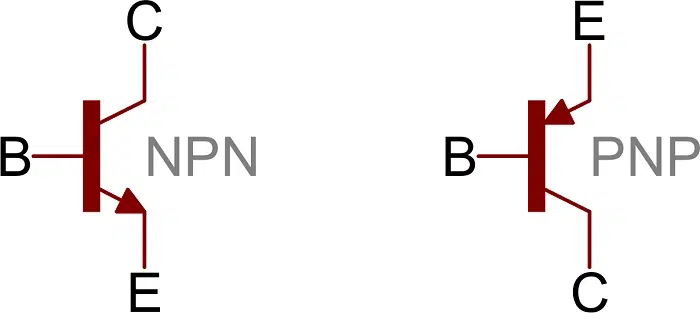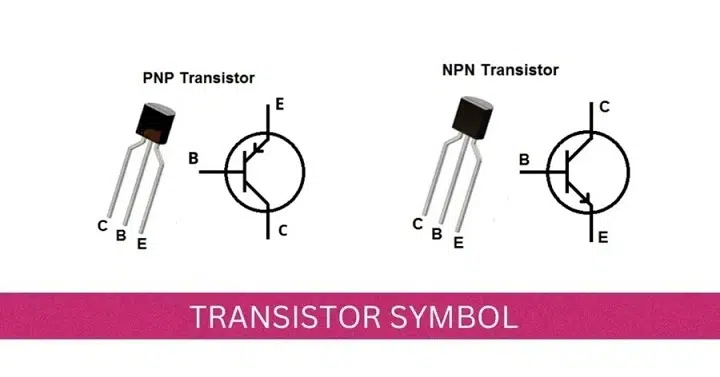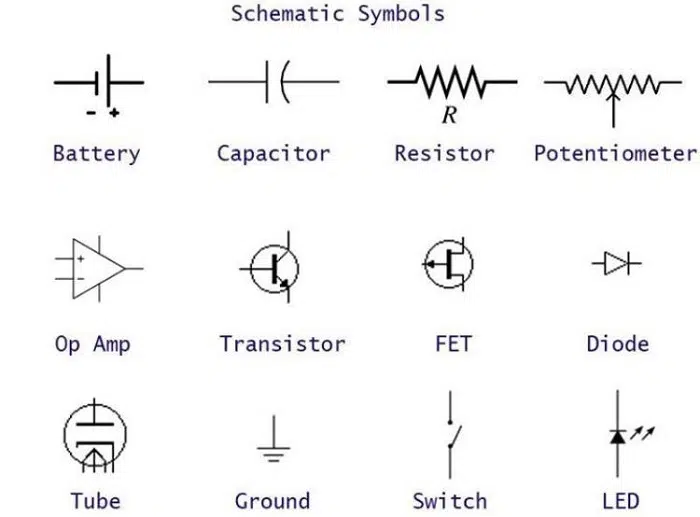Symbols are powerful instruments used by humans to communicate complex ideas quickly and effectively. They are short, visual, and understandable everywhere. The transistor symbol is among the most important symbols in electronics and technology. The small graphical symbol is more than a drawing; it holds deeper meaning in diagrams, circuits, and modern engineering. All are eager to learn what the symbol of the transistor is, what it stands for, and how it is used in our day-to-day life.
The transistor has also been referred to as the “building block” of electronics today. Transistors are what we do not have computers, no mobile phones, and no internet per se. Transistor symbol, therefore, is not merely an engineering drawing; it is a reflection of progress, science, and innovation.
This essay accounts for the origin of the transistor symbol, how it is denoted in various classes of circuits, how it is utilized in diagrams and Microsoft Word documents, and why it is important in technology and culture.
Coming Up with the Idea of a Symbol
Symbol is a line or mark standing for something larger than itself. ♥ stands for love, + can stand for addition or faith, and the symbol of the transistor represents a particular electronic component.
Symbols work because they allow for understanding in the blink of an eye. An engineer will know at once what function a transistor symbol has in a circuit without spending time reading detailed descriptions. In the same way, symbols allow electronics to be a worldwide language regardless of nations and cultures.
Origins of the Transistor Symbol

The transistor was indeed invented in 1947 by John Bardeen, Walter Brattain, and William Shockley at Bell Labs. When the device migrated into radios, computers, and industrial equipment, there was a need for simple-to-read diagrams. Transistor symbols were devised by engineers as a component of circuit diagrams to make design and reading schematics easier.
There are several types of transistors, and they all have distinct symbols. The main ones are:
| Type of Transistor | Symbol Representation | Meaning |
| NPN (Bipolar Junction Transistor) | Arrow pointing out | Current flows out of emitter |
| PNP (Bipolar Junction Transistor) | Arrow pointing in | Current flows into emitter |
| MOSFET (Metal-Oxide-Semiconductor FET) | With gate, drain, source lines | Voltage-controlled current device |
| JFET (Junction FET) | Gate with channel | Current controlled by voltage across junction |
These symbols are now standard and applied to all electronics diagrams.
Transistor Symbol in Culture and Technology
The transistor changed history by making electronics compact, sped-up, and more reliable. Transistors replaced large and fragile vacuum tubes that were used before them. The transistor symbol was a badge of the electronic revolution.
In society, the transistor also signifies advancement. The 1950s “transistor radio” was one of the earliest handheld devices one could take anywhere, that embodied freedom and contemporary life. Now, although everyone does not notice the transistor within their products, the symbol still represents sophisticated technology and microelectronics.
Transistor Symbol in Science and Engineering
In electronics, the symbol of a transistor is crucial for circuit design. Engineers use the symbol to represent the current and voltage characteristics in a circuit.
| Use of Symbol | Sample | Signification |
| NPN Transistor | Switch, amplifier | Allows current if base is powered |
| PNP Transistor | Control of signal | Turns on if base is low |
| MOSFET | Power electronics | Controls large currents through small voltage |
The small arrow inside the symbol shows direction of current flow, which is critical in understanding how the device works.
Using the Transistor Symbol in Word and Computer Documents
Transistor symbols are usually needed by students, instructors, and engineers for insertion into Word documents as part of reports or assignments. Word does not have integrated circuit symbols, but they can be included.
| Method | Steps |
| Shapes | Go to Insert → Shapes → Lines and draw manually the symbol |
| Equation Editor | Employ lines and arrows to insert portions |
| Copy-Paste | Take symbols for transistors from circuit software or the internet |
| Special Fonts | Employ electronics symbol fonts with transistor symbols |
Engineers usually produce professional circuit diagrams using programs like AutoCAD, Proteus, or Multisim, but Word can still be handy to teach with.
Transistor Symbol in Circuit Diagrams
The symbol of the transistor is most powerful in circuit diagrams, showing how the components are connected. For example:
- An NPN transistor symbol in a circuit shows current flow when the base is at voltage.
- A PNP transistor symbol denotes reversed action.
- MOSFET and JFET symbols are found in modern devices like laptops, mobile phones, and solar inverters.
The transistor symbol is therefore not just a drawing, but an operational plan for the design of real machines.
Also Read: Doctor Symbol: Meaning, History, and Global Importance
Why Symbols like the Transistor Symbol are Important
Symbols like the transistor symbol are essential since they are time-efficient and prevent confusion. If it were necessary for engineers to write down descriptions instead of using symbols, diagrams would be un-readable.
The transistor symbol is also a worldwide language. An Indian engineer can easily read the same symbol as a Japanese engineer or an American engineer. This global standardization allows co-operation and advancement.
The Psychology of the Transistor Symbol
Psychologically, the symbol of the transistor signifies amplification and control. It illustrates how tiny signals can turn into strong outputs. It reminds individuals on a deeper level about how tiny inventions can revolutionize the world.
Similar to the transistor that itself substituted heavy vacuum tubes and led to the development of computers, its symbol symbolizes efficiency and advancement. To students, the presence of the transistor symbol in textbooks tends to generate questions regarding electronics and how things work.
Conclusion
The symbol of the transistor is one of the most iconic symbols of contemporary technology. It symbolizes history, science, and advancement. From its conception in Bell Labs to being installed in every phone across the world today, the transistor and its symbol represent the cornerstone of digital life.
In Word, it is used for study or projects but on professional circuits it appears in all schematics to guide design and testing. As more than a technical symbol, the symbol of the transistor indicates how a tiny invention can power today’s world.
Frequently Asked Questions
What is the symbol of the transistor?
It is a graphical sign used on circuit diagrams for marking a transistor.
What are the types of symbols of transistors?
NPN, PNP, MOSFET, and JFET are the main ones with their own symbols.
Who invented the transistor?
It was invented in 1947 by John Bardeen, Walter Brattain, and William Shockley of Bell Labs.
How do I insert a transistor symbol in Word?
You can draw using shapes, insert from special fonts, or cut-and-paste from circuit software.
Why is the transistor symbol important?
It simplifies circuit diagrams, makes them universal, and readable.


